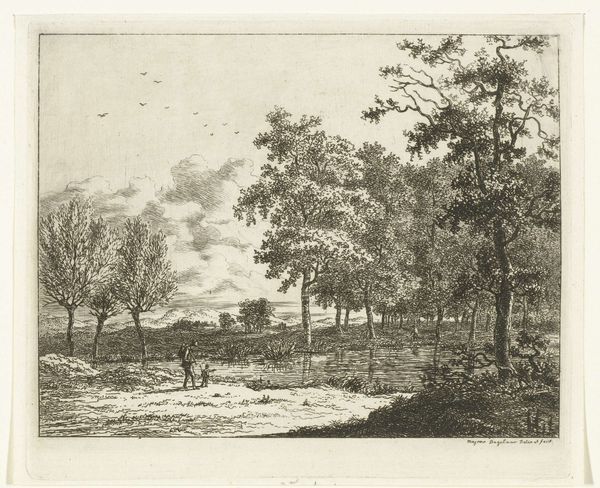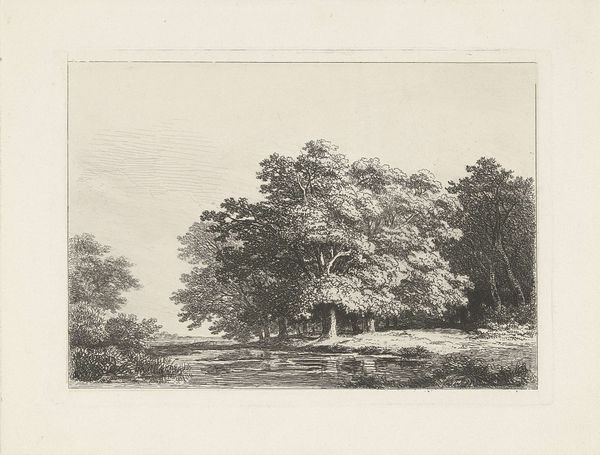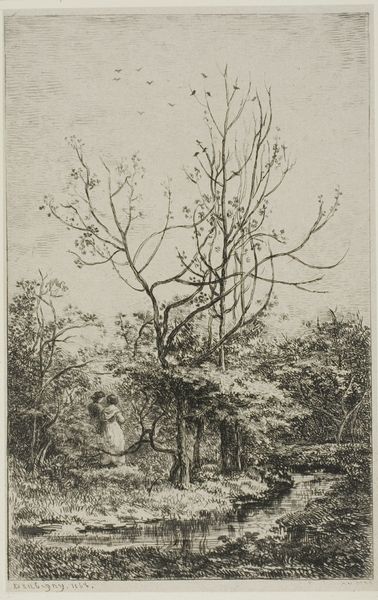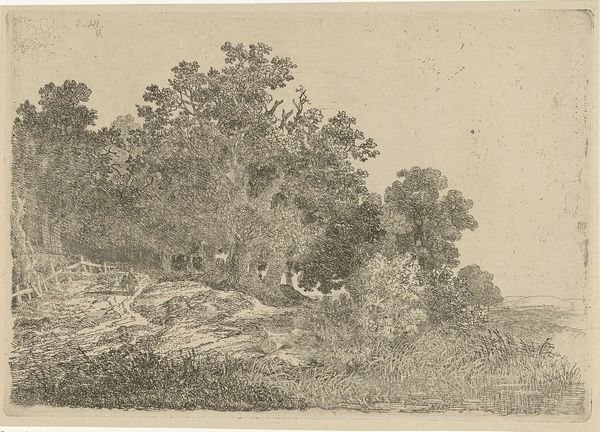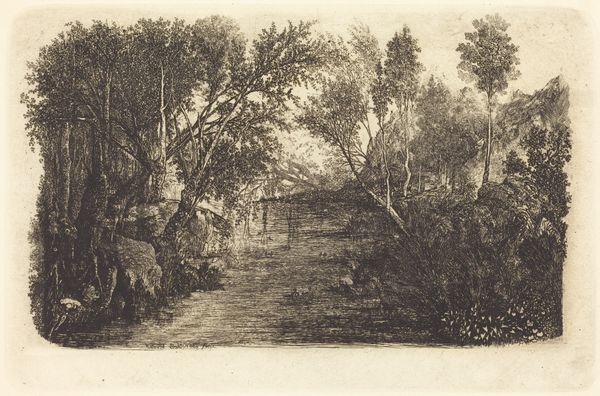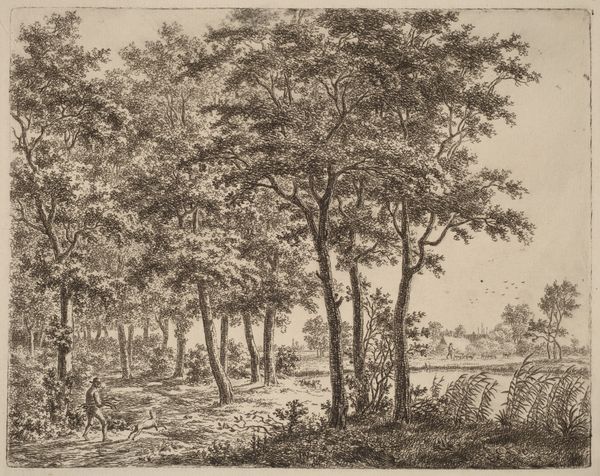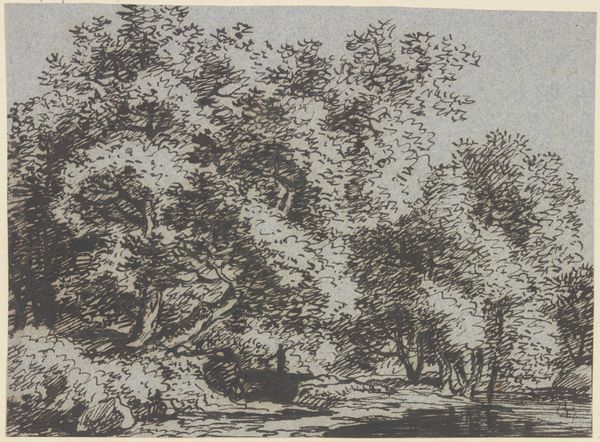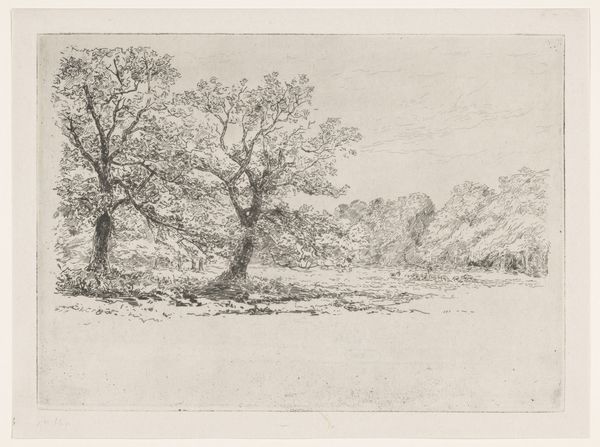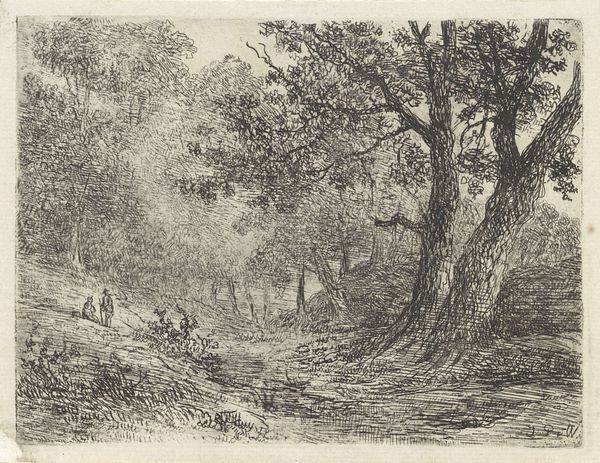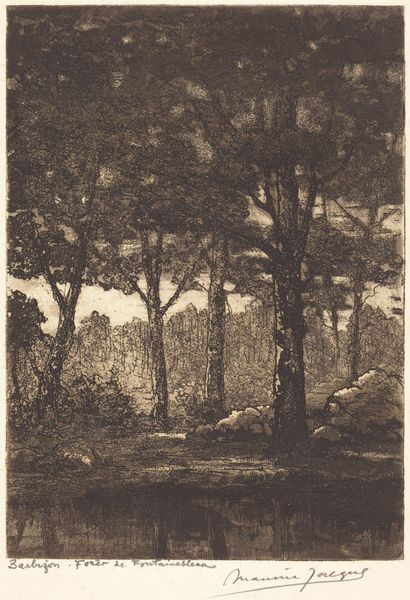
Dimensions: height 149 mm, width 212 mm
Copyright: Rijks Museum: Open Domain
Curator: The crisp lines in this etching immediately suggest the delicate detail achievable in printmaking. "Trees by a Small Lake" is attributed to Remigius Adrianus Haanen, likely made sometime between 1827 and 1888. What's your take on this particular scene? Editor: A melancholy permeates the scene; the tonal gradations in blacks, greys, and whites are beautifully austere, conjuring up notions of a pensive landscape steeped in Romanticism's love for sublime nature. Curator: Absolutely. This era witnesses the Romantics wrestling with modernity and turning towards nature as a refuge. The solitary figures in the boat accentuate this idea, echoing themes found across romantic-era landscape paintings that engage ideas around isolation. Considering the growth of industrialized cities at that time, the landscape could even suggest socio-political commentary by revealing an idealized vision of nature that excludes those industrial developments and city life, creating a visual dialectic that speaks to the value placed on escaping back to rural life in the collective cultural imagination. Editor: Haanen truly demonstrates mastery over light, subtly revealing the texture of each leaf and blade of grass. Semiotically speaking, each delicate stroke contributes towards representing an entire complex ecological system. In viewing it this way, nature is unveiled, or 'disseminated' in Derridean terms as pure, immediate sensation rendered palpable to an observer. Curator: But considering his socio-economic status as a renowned painter, could it be interpreted as participating in a form of artistic elitism by suggesting a need to 'escape', available only to some privileged social classes and people like Haanen? In a broader social context, does romanticizing this isolated vision detract from a recognition that art needs to explore real-world experiences that might instead encompass themes concerning industrial realities affecting a great part of the population during that time? Editor: Certainly, those socio-economic realities cannot be dismissed and add context and a richness that should challenge purely formal readings. What strikes me in thinking through that perspective is its contribution to the wider visual culture of landscape depictions, making visible or, equally as important, obscuring certain socio-political narratives within this symbolic representation of the Dutch landscape. Curator: Exploring "Trees by a Small Lake" really illuminates how the quiet beauty in etching, if given broader theoretical understanding, could also open meaningful dialogue regarding our shared histories. Editor: Indeed; it prompts us to further investigate not just how nature is rendered aesthetically but why certain stories get emphasized over others through formal means and choices in style.
Comments
No comments
Be the first to comment and join the conversation on the ultimate creative platform.
